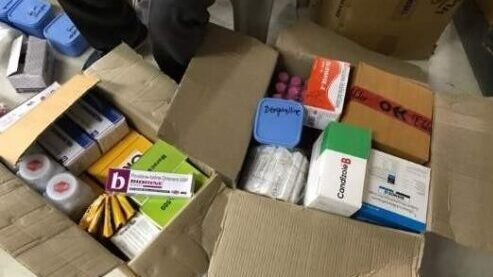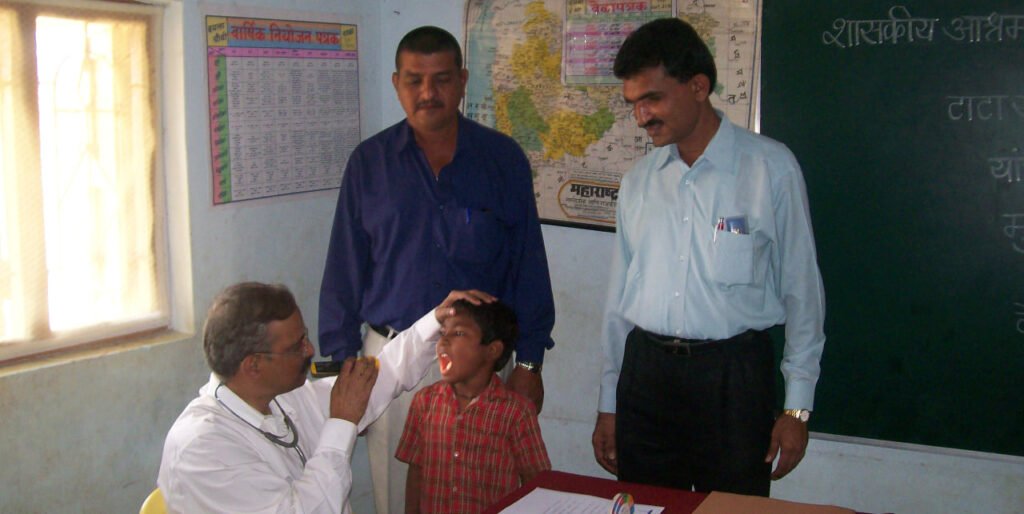SARVE SANTU NIRAMAYA
A project Sarve Santu Niramaya was conceptualized to provide healthcare at the door step of the marginalized . The project was implemented and executed in 3 phases i.e Planning , Actual Implementation and Data Analytics.
The planning of the camps started with identifying the villages. After the villages were identified and 3 teams from Gurukrupa Foundatiion under the guidance of Dr D G Pandit , MBBS, MS , McH , AFIH were formed and the camps started simultaneously at the identified rural villages in Maharashtra .




- Services provided - Patients received the following services at their doorstep, At no charges to them –
- OPD consultations,
- Generic medicines for common ailments to patients, who need them,
- Nutrition supplements to patients who need them
- Body mass index, diet planning and counseling
- Vision screening , Screening for cataract
- Hemoglobin , Blood pressure
- Blood sugar as needed
Under this project – A total of 75 camps were conducted in 75 villages, across 14 talukas in the 8 districts of Maharashtra within 30 days by 3 teams led by Dr D G Pandit , Dr Kiran Pandit and Dr Sampada Pandit and a team of about 18 -20 paramedical staff consisting of Coordinators, Lab technicians, Doctors, Staff Nurses, Vehicles, Medicines, Consumables like RBS strips, HB machines, HB strips etc. The biomedical waste generated was disposed as per the Guidelines of Maharashtra Pollution Control Guidelines and BMW rules .

- Outcome -
The population consisted of mainly villagers and their families and also few casual workers . They all came from a very marginalized society with very little or no access to basic sanitation , no availability of potable water , lacking basic hygiene facilities , dependence on the use of woods or coal for the domestic cooking , lack of knowledge about when to take access to healthcare , and negligible or very scarce resources to meet the financial burden of the illness , no matter whether it was acute or chronic .
Many of the people complained about frequent respiratory tract illnesses, nutritional deficiency related symptoms, frequent body aches and frequent URTI related symptoms . Due to the extreme poverty they are not in a position to visit the doctors for treatment and hence these cases are often unreported and untreated.
There were many patients who had extensive skin diseases , respiratory diseases and few acute medical conditions like fall , injuries , infected wounds that were treated immediately by the medical teams by doing dressing , providing adequate antibiotics , analgesics and anti-inflammatory medicines.
Few patients were newly detected diabetics whose sugars were almost above 400 to 500mg/dl or anaemic females with Hb% as low 5gms .These patients were immediately referred to the nearest medical facilities so that they could follow-up further .
There is a greater need to address this issue where the screening of the population is regularly done by trained paramedical staff and the people who show symptoms are proactively referred to the medical centres for further evaluation and treatment.
We are currently facing the double burden of diseases like infectious diseases in one hand and the non communicable diseases like Diabetes , Hypertion , CAD , etc . Management of this scenario will require extensive mobile medical camps to be organized more frequently . The local grampanchayats greatly appreciated this initiative and ensured that the needy attended the medical camps in the respective villages.
